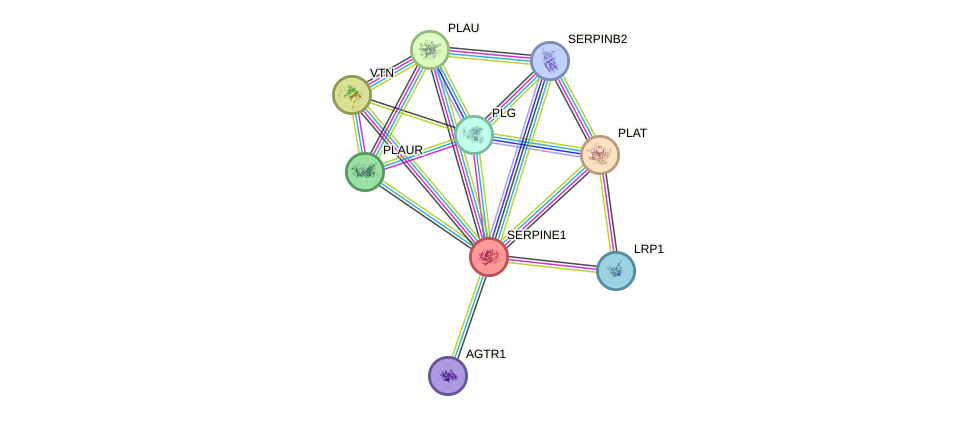GenAge entry for SERPINE1 (Homo sapiens)
Gene name (HAGRID: 301)
- HGNC symbol
- SERPINE1
- Aliases
- PAI; PLANH1; PAI1
- Common name
- serpin peptidase inhibitor, clade E (nexin, plasminogen activator inhibitor type 1), member 1
Potential relevance to the human ageing process
- Main reason for selection
- Entry selected based on evidence linking the gene product to the regulation or control of genes previously linked to ageing
- Description
PAI-1 (SERPINE1) is a serine protease inhibitor, which is elevated in Klotho (KL)-deficient mice. Klotho-deficient mice exhibit an accelerated aging-like phenotype including reduced lifespan, arteriosclerosis, and emphysema. PAI-1 deficiency retards the development of senescence and protects organ structure and function while prolonging the lifespan of the Klotho mutant mice [3484].
Cytogenetic information
- Cytogenetic band
- 7q22.1
- Location
- 101,127,089 bp to 101,139,266 bp
- Orientation
- Plus strand
Protein information
- Gene Ontology
-
Process: GO:0001300; chronological cell aging
GO:0001525; angiogenesis
GO:0002576; platelet degranulation
GO:0007623; circadian rhythm
GO:0010469; regulation of receptor activity
GO:0010757; negative regulation of plasminogen activation
GO:0010951; negative regulation of endopeptidase activity
GO:0014912; negative regulation of smooth muscle cell migration
GO:0030194; positive regulation of blood coagulation
GO:0030195; negative regulation of blood coagulation
GO:0030198; extracellular matrix organization
GO:0030336; negative regulation of cell migration
GO:0032757; positive regulation of interleukin-8 production
GO:0033629; negative regulation of cell adhesion mediated by integrin
GO:0035491; positive regulation of leukotriene production involved in inflammatory response
GO:0042730; fibrinolysis
GO:0045766; positive regulation of angiogenesis
GO:0045944; positive regulation of transcription from RNA polymerase II promoter
GO:0048260; positive regulation of receptor-mediated endocytosis
GO:0050729; positive regulation of inflammatory response
GO:0050829; defense response to Gram-negative bacterium
GO:0051918; negative regulation of fibrinolysis
GO:0061044; negative regulation of vascular wound healing
GO:0061045; negative regulation of wound healing
GO:0071222; cellular response to lipopolysaccharide
GO:0090026; positive regulation of monocyte chemotaxis
GO:1902042; negative regulation of extrinsic apoptotic signaling pathway via death domain receptors
GO:2000098; negative regulation of smooth muscle cell-matrix adhesion
GO:2000352; negative regulation of endothelial cell apoptotic process
Cellular component: GO:0005576; extracellular region
GO:0005615; extracellular space
GO:0005886; plasma membrane
GO:0031012; extracellular matrix
GO:0031093; platelet alpha granule lumen
GO:0070062; extracellular exosome
Hide GO termsFunction: GO:0002020; protease binding
GO:0004867; serine-type endopeptidase inhibitor activity
GO:0005102; receptor binding
GO:0005515; protein binding
Protein interactions and network
Retrieve sequences for SERPINE1
Homologs in model organisms
In other databases
- GenAge microarray genes
- This gene is present as SERPINE1
- LongevityMap
- This gene is present as SERPINE1
- CellAge
- This gene is present as SERPINE1

